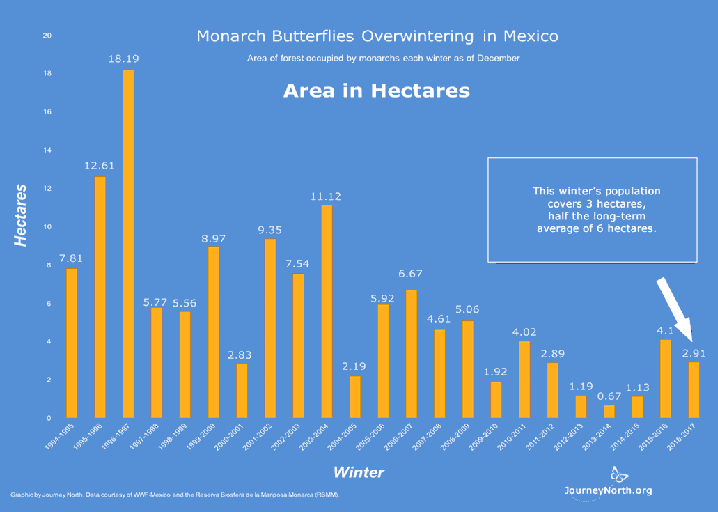Conservation
Overwintering monarchs have always been vulnerable to the vagaries of the weather. A deep freeze can kill them by the hundreds of millions, leaving piles of dead monarchs sometimes two or three feet deep. The forested microclimate of the overwintering grounds used to provide a buffer against the worst weather. But in recent decades, farming and illegal logging have stripped much of the area bare. In the thinning forest, the colonies have become more susceptible to extreme weather. In fact, weather extremes, continued habitat degradation at the overwintering sites, and the widespread use of herbicides and genetically modified crops in the US brought the monarch colony size to a record low in 2013/2014. There was a substantial rebound in colony size in 2015/2016, but again a decline in 2016/2017 (see Journey North).

Above: Estimate of total number of monarchs at the overwintering sites in Mexico, Estimates, 1994-2017. From Journey North; plotting of data are from estimates from the WWF.
Without suitable overwintering grounds and way stations, the monarch butterfly’s spectacular yearly migration remains in jeopardy. Organizations, individuals, and government agencies from Mexico, the United States and Canada are cooperating on a number of projects that aim to curb deforestation and protect monarch habits and habitats across the continent. The following websites provide further information:
La Cruz Habitat Protection Project